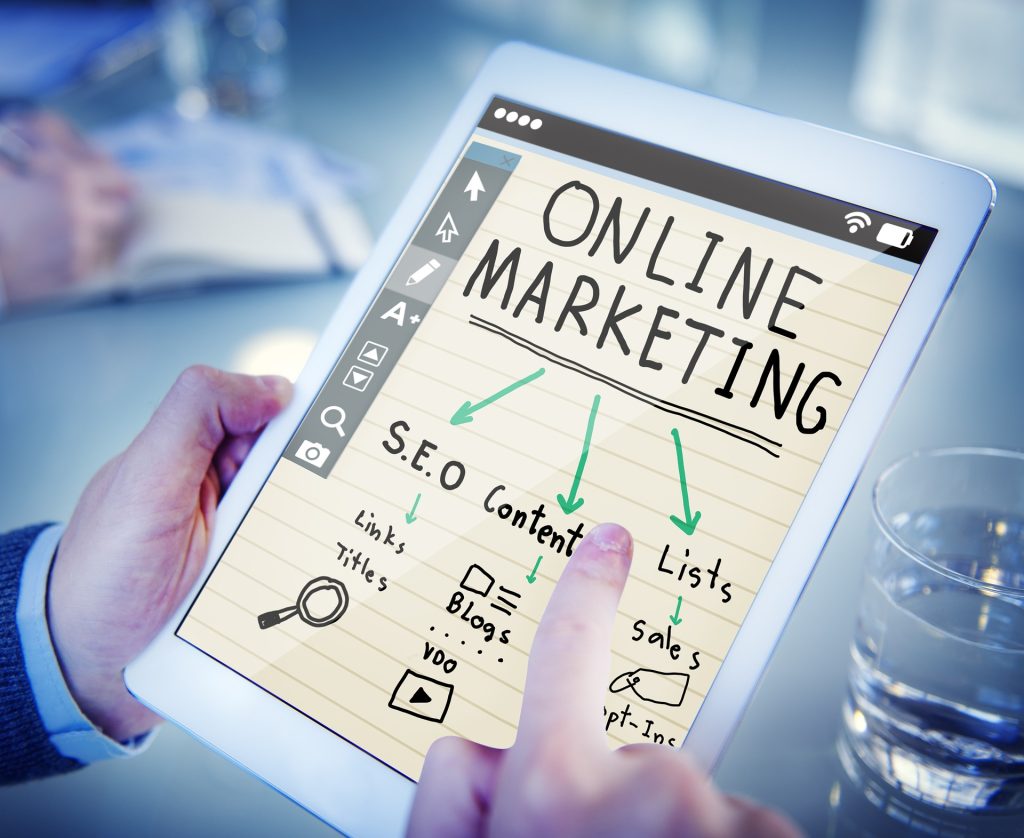Advertising campaigns and promotions are strategies businesses and organizations use to increase awareness of their products or services and attract and retain customers. Looking for an SEO company Parramatta? We’ve got you covered! Here are some key concepts related to advertising campaigns and promotions:

Target audience
Before creating an advertising campaign or promotion, it’s important to identify the target audience. This includes understanding their demographics, interests, behaviors, and needs.
Message
The message of an advertising campaign or promotion should be tailored to the target audience. It should be clear, concise, and memorable.
Channels
Many channels can promote a product or service, including social media marketing parramatta, email marketing, print ads, TV ads, and billboards. The choice of the channel will depend on the target audience and the budget.
Budget
An advertising campaign or promotion budget will depend on the goals, target audience, and channels used. It’s important to allocate resources wisely to get the best return on investment.
Promotions
Promotions are incentives to encourage customers to purchase or take a specific action. Examples include discounts, gifts, contests, and loyalty programs.
Metrics
It’s important to track and measure the success of advertising campaigns and promotions. Metrics may include sales, website traffic, social media engagement, and customer feedback.
Importance of Digital Marketing for business
PPC (Pay-per-click) and AdWords are both advertising models used in digital marketing. PPC is a type of online advertising in which advertisers pay each time a user clicks on one of their ads. Advertisers bid on specific keywords or phrases they believe their target audience is searching for. The ads appear on search engine results pages (SERPs) and other websites and are labeled as sponsored content. The amount an advertiser pays per click services can vary depending on the competition for the chosen keywords or phrases.
AdWords is Google’s pay-per-click advertising platform. Advertisers create ads and bid on keywords or phrases related to their products or services. AdWords uses a bidding system to determine which ads are shown to users, based on factors such as bid amount and ad quality score. Advertisers can choose a variety of ad formats, including text, image, and video ads, and they can target specific geographic locations and demographics.
Both PPC and AdWords can effectively drive traffic and conversions for businesses. However, it’s important to carefully research and plan campaigns, choose the right keywords, and monitor results to ensure a positive return on investment.
Social Media Marketing (SMM) and Social Media Optimization (SMO) are two related but distinct concepts in digital marketing. SMM involves using social media platforms like Facebook, Twitter, Instagram, and LinkedIn to promote a business’s products or services. SMM can include paid advertising, such as sponsored posts or ads, as well as organic marketing, such as creating and sharing engaging content. SMM aims to build brand awareness, drive website traffic, and ultimately generate leads or sales.
SMO is the process of optimizing a business’s social media presence to increase visibility and engagement. This can include optimizing profiles and content for specific social media platforms, using relevant keywords and hashtags, and encouraging user engagement through comments, shares, and likes. The goal of SMO is to increase brand recognition and reach and foster a community of loyal followers.
They can be effective ways to connect with audiences and promote a business’s products or services. However, it’s important to carefully choose the right social media platforms for a business’s target audience, create engaging content that resonates with that audience, and measure results to ensure a positive return on investment.
Email marketing is a form of digital marketing parramatta that uses email to promote a business’s products or services, nurture leads, and engage with customers. Here’s an overview of email marketing:
Building an email list
The first step in email marketing is building an email list of subscribers who have given permission to receive marketing messages from a business. This can be done through lead magnets, such as offering a free guide or newsletter in exchange for an email address, or by asking customers to opt-in to email communications.
Creating email campaigns
Once an email list is established, businesses can create email campaigns that are designed to engage subscribers and promote products or services. Email campaigns can include newsletters, promotional emails, and triggered emails that are sent based on specific actions or behaviors.
Designing emails
Emails should be designed to be visually appealing, with clear and concise messaging that aligns with the business’s brand. Emails should also be optimized for different devices, including desktop, mobile, and tablet.
Personalization
Personalization is an important aspect of email marketing, as it can help increase engagement and conversions. Personalization can include using the subscriber’s name in the email, segmenting the email list based on demographics or behaviors, and providing personalized recommendations based on past purchases or website activity.
Testing and measuring
It’s important to continually test and measure the effectiveness of email campaigns. This can include A/B testing subject lines, call-to-action buttons, and email content, as well as tracking open rates, click-through rates, and conversion rates. Email marketing can be a powerful tool for businesses to connect with their audiences, drive sales, and build brand loyalty. However, it’s important to create high-quality content, personalize messages, and continually test and optimize campaigns for the best results.
Online branding is the process of establishing and promoting a business’s brand identity on digital channels. You can excel in online branding by focusing on its main goals:
Defining brand identity
The first step in online branding is defining the business’s brand identity, including its values, personality, and messaging. This can include developing a brand guide that outlines the business’s visual identity, tone of voice, and messaging.

Creating a website
A website is often the cornerstone of a business’s online branding efforts. The website should be designed to reflect the brand’s identity and provide a positive user experience. Developing social media presence: Social media platforms, such as Facebook, Twitter, Instagram, and LinkedIn, provide opportunities for businesses to build and promote their brand. Social media profiles should be optimized to reflect the brand’s identity, and content should be created that aligns with the brand’s messaging.
SEO company Parramatta
Search engine optimization Parramatta (SEO) is the process of optimizing a website’s content and structure to improve its visibility on search engine results pages. This can include optimizing website content with relevant keywords and building backlinks from reputable sources.
Creating content
Content marketing can be an effective way to build and promote a brand online. This can include creating blog posts, videos, infographics, and other types of content that align with the brand’s messaging and provide value to the target audience.
Measuring success
It’s important to track metrics such as website traffic, social media engagement, and brand mentions to determine the success of online branding efforts. This can help identify areas for improvement and inform future strategies.
Online branding is an important aspect of digital marketing that can help businesses build brand recognition and establish themselves as industry leaders. It’s important to define the brand’s identity, create a cohesive online presence, and measure success to ensure the effectiveness of online branding efforts.
Blogging is a form of content marketing that involves creating and publishing regular articles, posts, or other types of content on a blog or website. Here’s an overview of blogging:
Choosing a platform
The first step in starting a blog is choosing a platform, such as WordPress or Square space. These platforms offer templates and tools for creating and publishing blog content.
Identifying the target audience
It’s important to identify the target audience for a blog and create content that resonates with them. This can include researching keywords and topics relevant to the audience’s interests and needs.
Creating content:
Blog content should be high-quality, engaging, and informative. This can include how-to articles, industry news, personal stories, or other content that provide the reader value.
Promoting content:
Promoting blog content can include sharing articles on social media, including links in email newsletters, and guest blogging on other websites to build backlinks and increase visibility.
Measuring success:
It’s important to track metrics such as page views, engagement, and social shares to determine the success of a blog. This can help identify what content resonates with the audience and inform future content creation.
Blogging can be an effective way for businesses to establish themselves as thought leaders in their industry, build brand awareness, and drive traffic to their websites. However, creating high-quality content that resonates with the target audience and promoting it through various channels is important to maximize its reach.
Marketing automation refers to using technology and software to automate repetitive marketing tasks and workflows. Here’s an overview of marketing automation:
Lead generation:
Marketing automation can help generate leads by using landing pages, lead magnets, and forms to collect contact information from potential customers.
Lead nurturing:
Once leads are generated, marketing automation can help nurture them by delivering targeted and personalized content through email marketing, social media, and other channels.
Customer segmentation: Marketing automation can segment customers based on demographics, behaviors, and interests, allowing businesses to tailor their marketing efforts to specific groups.
Campaign management:
Marketing automation can help manage campaigns by automating email sends, social media posts, and ad placements.
Analytics and reporting:
Marketing automation can track and analyze customer behavior and campaign performance, providing insights into what works and doesn’t. Marketing automation can help businesses save time and resources by automating repetitive tasks and allowing marketers to focus on more strategic activities. It can also improve the customer experience by delivering personalized and relevant content at the right time. However, ensuring the automation is set up correctly and aligned with the overall marketing strategy to achieve the desired results is important.







